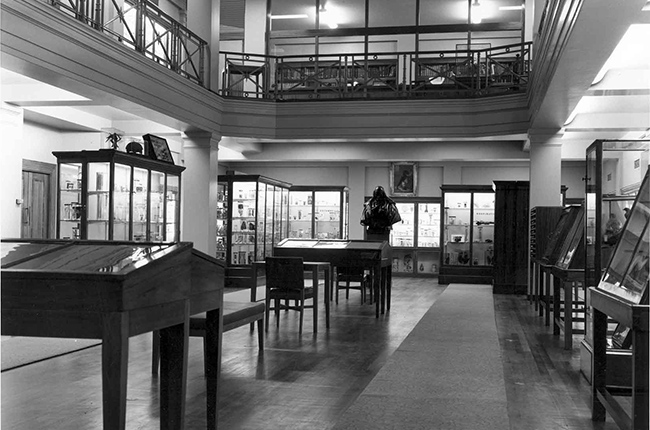Preserved Specimens
A LASSCO Current Clearance: Now Selling – Fixtures, Fittings and Flooring From The Royal College of Surgeons And Hunterian Museum.
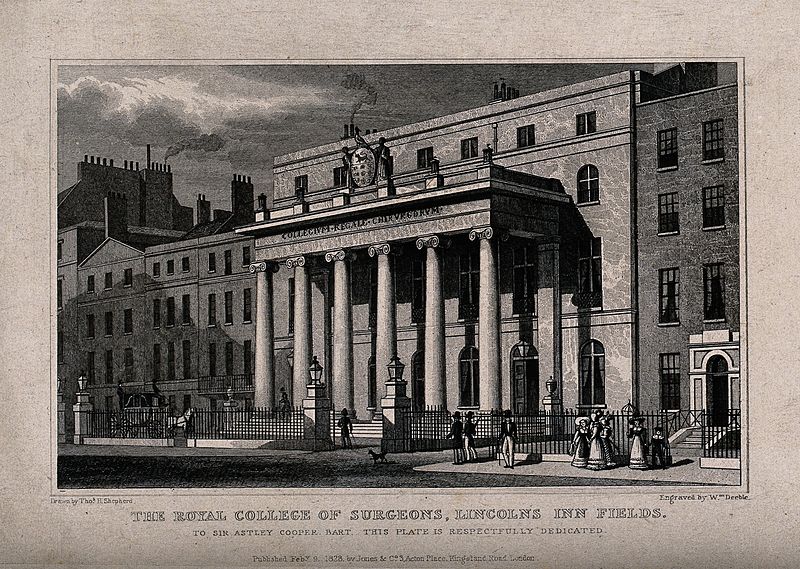
On the very last night of The Blitz, 11th may 1941, during a German bombing raid on London, a single 550 lb high explosive bomb hit the set of buildings that, since 1796, had housed the Royal College of Surgeons in Lincolns Inn Fields. On top of the initial destruction caused by the terrible explosive force of the bomb, a fire quickly started and soon spread over the rambling collection of halls, laboratories basements and exhibition rooms that had grown up during College’s many years on the site.
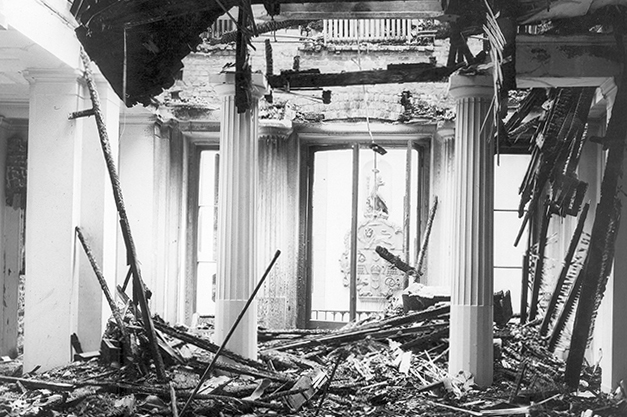
A variety of buildings had occupied the central London site, just north of the Strand, since the College moved there from earlier premises near Newgate Gaol. While the Newgate site had been chosen the better to have access to the warm bodies of executed criminals, the new buildings in Lincolns Inn would emphasise the scientific and educational intentions of the College. A fine Classical edifice by George Dance was built in time for the presentation of a new Royal Charter in 1800. In 1833 Dance’s building was in turn replaced by a new structure to the designs of Sir Charles Barry, architect of the rebuilt Palace of Westminster.
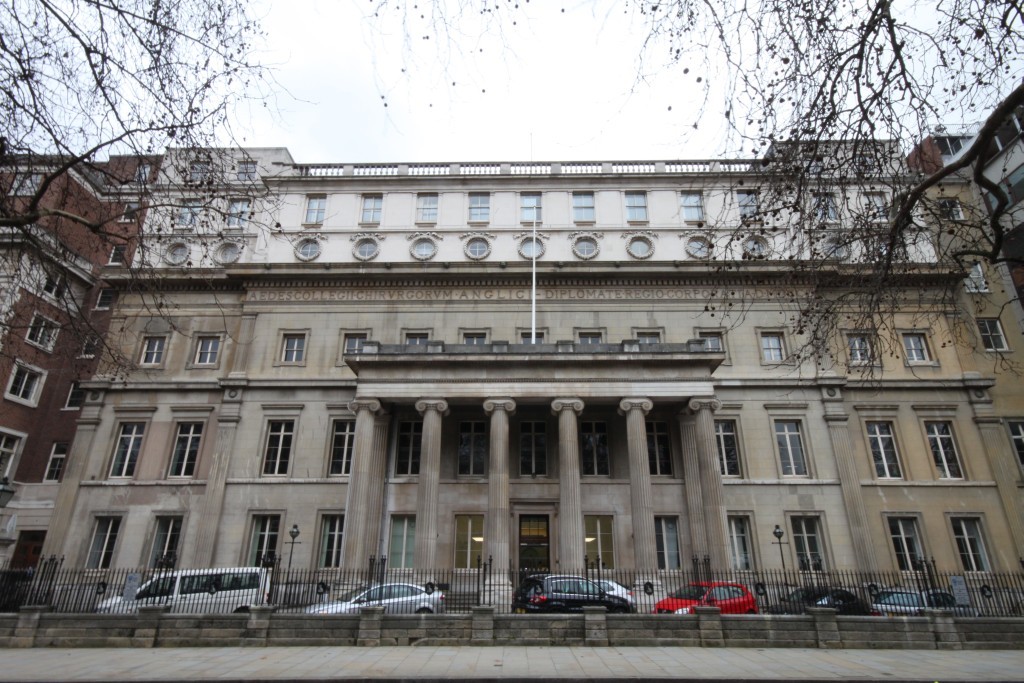
At the time of its move to Lincoln’s Inn the College also acquired, by Act of Parliament, the private collection of John Hunter (1728-1793), the father of surgical science. Over 6,000 items were housed and displayed in a purpose built museum including embryos, curiosities, specimens, surgical equipment and pickled body parts all collected in a spirit of indiscriminate inquiry. During the war, and surprisingly for a nation under siege, much of the collection was still openly displayed on the shelves and in the cabinets for general view. It is not just Soho’s Windmill club that has the right to say ‘we never closed’ during the War!
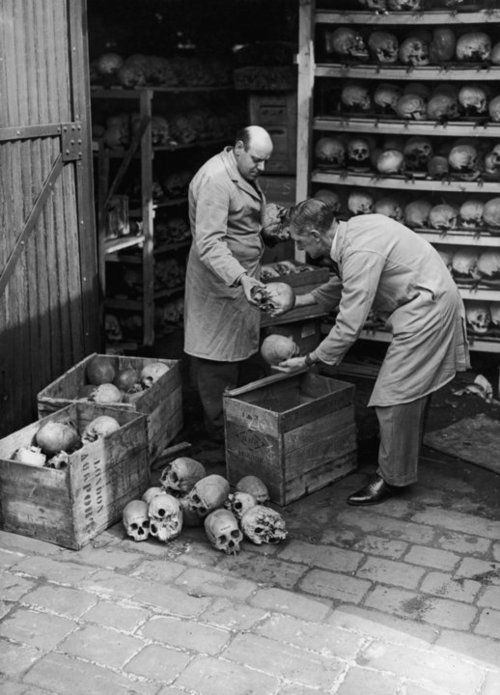
After the explosion and terrible fire not much was left of the Royal College of Surgeons except the Classical frontage and the members library. Within the Hunterian Collection the loss was profound. Some specimens survived, notably the the Odontological collection (a comprehensive assortment of skulls, jaws and teeth) which had been moved into the brick vaulted basements beneath the museum, but over half the collection was lost.
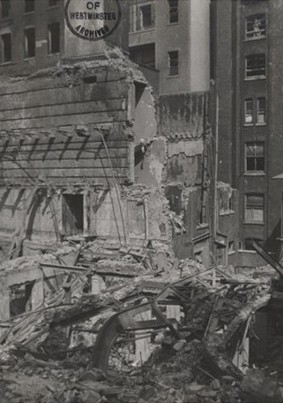
A bricked up statue of John Hunter survived only to survey a blackened ruin. One can only imagine the Dantesque vision which must have faced the men tasked with clearing such a collection of flesh and bone and pickled limbs from beneath the smouldering rubble.
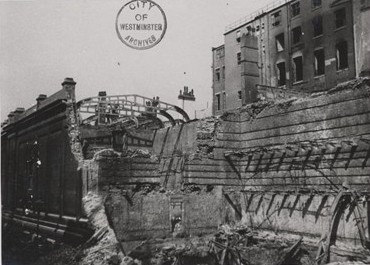
After the War the decision was made to rebuild again. Raised up in sober but stylish load bearing brick with Portland Stone detailing, the emphasis in the new building was on an expansion of the research laboratories and educational aspects of the College.
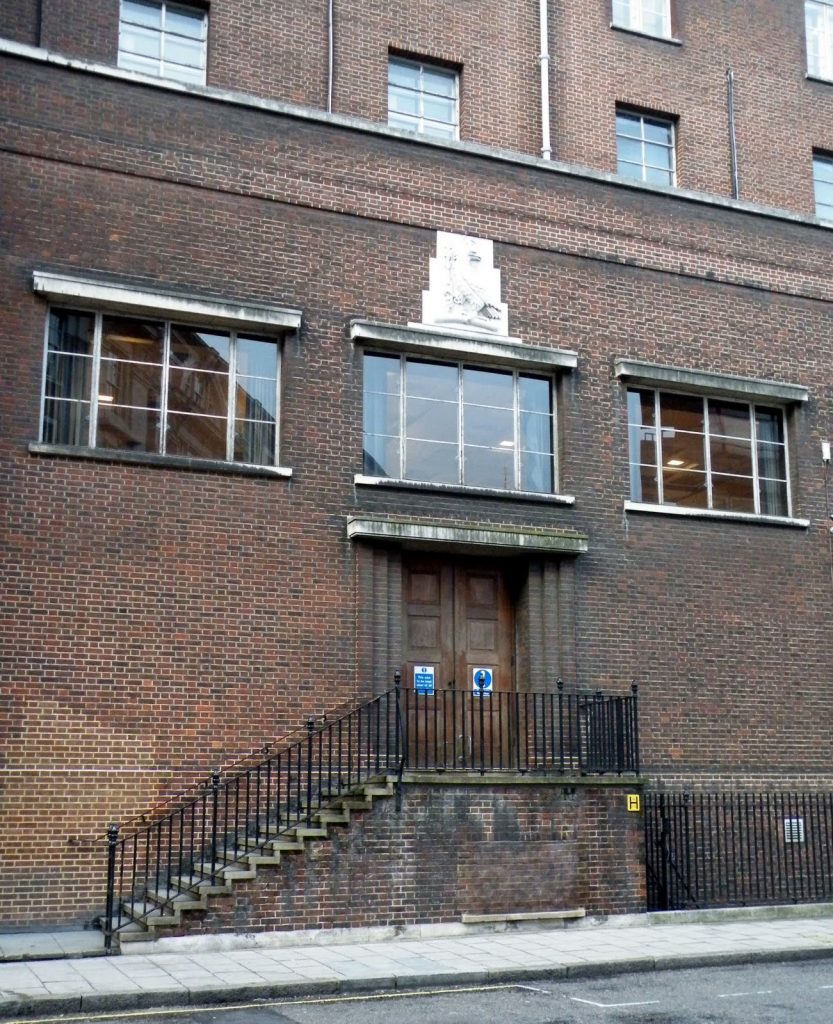
The interiors were handled wonderfully well with fantastic, high quality materials as an attempt was made to emulate the destroyed Charles Barry fittings of the pre-war College. The meeting rooms were panelled in Oak, much of it donated from historic parks and forests (with plaques attesting to this). The high ceilings were flanked by stately Tuscan Columns and Pilasters in Oak throughout. There were mosaics, busts, a fine central stone staircase and numerous memorials to members and benefactors who gave generously to the rebuild.
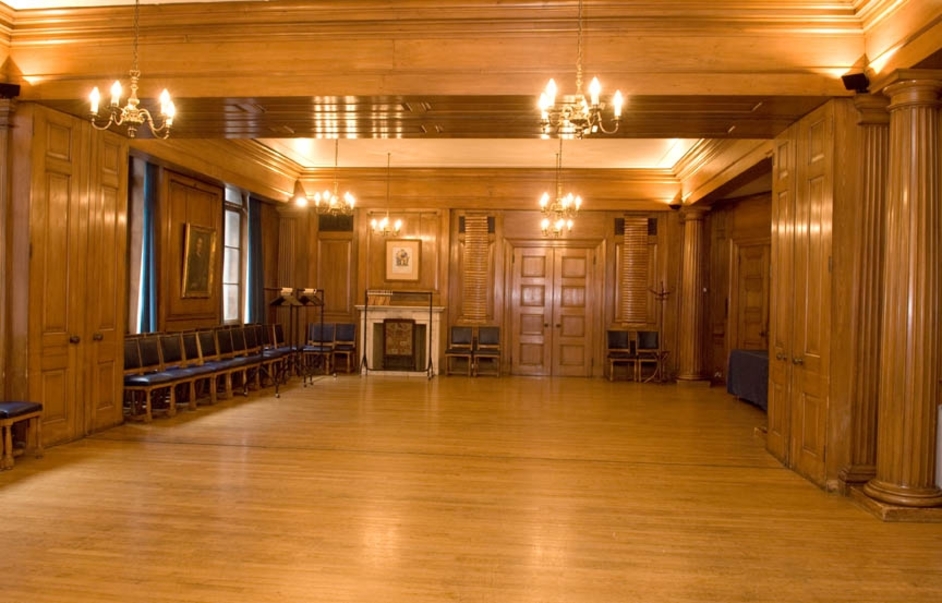
Now the Royal College Of Surgeons is to rebuild again. Large parts of the post-war building are at present being demolished. The College states “the redesign will reflect our changing functions as a home for surgical excellence in Britain and across the world in the 21st century.”
While no doubt this will be so, in the sad tradition of damnatio memoriae which seems to be a part of redevelopments such as these, the post war buildings are being roughly handled in much of the literature on the project. Variously described as ‘inefficient and ageing ‘, ‘disorientating’, ‘uneconomical, inflexible’, ‘expensive to run and refurbish… an obstacle’ and generally worn out, the 1950’s rebuild comes in for much harsh treatment.
It is interesting to see that precisely the same forceful arguments were put forward when the College was rebuilt with the most modern facilities possible after the War and opened by none other than the Prime Minister, Harold Macmillan, with a dedication to ‘the relief of people and the advancement of knowledge’.
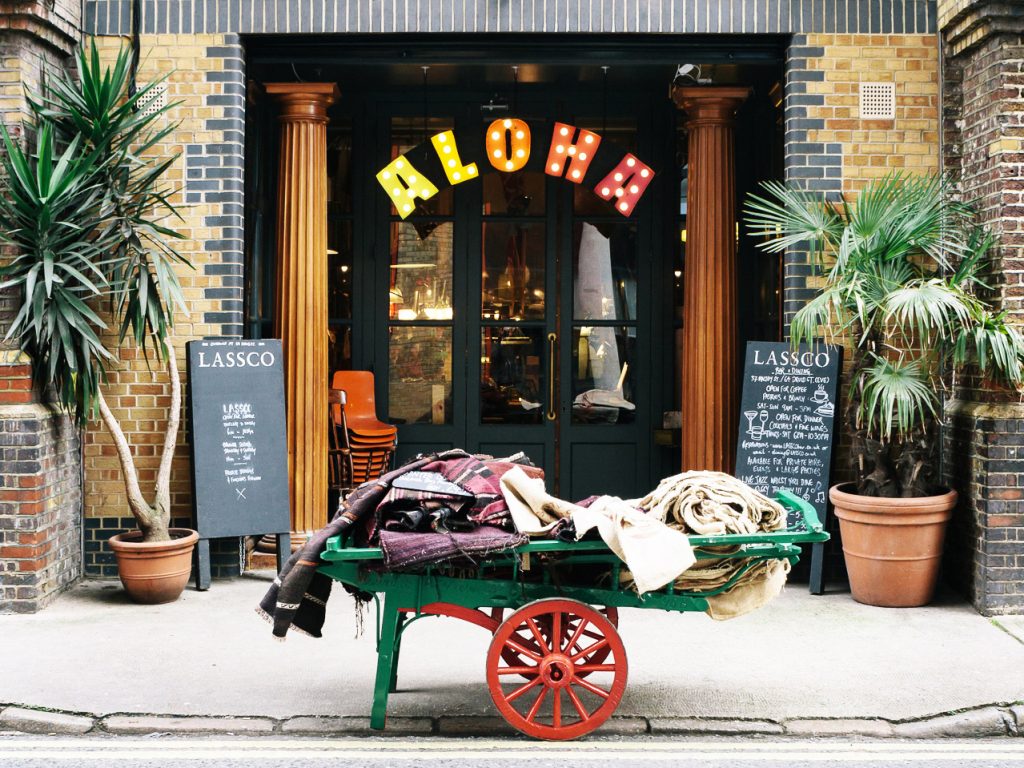
The fittings that LASSCO has salvaged from the Royal College of Surgeons really are of the highest quality. English Oak, not American, appears to have been used throughout the rebuilding and the skill in the decorative woodwork is of a type that suggests the quiet, unnoticed and long drawn out dusk of Edwardian craftsmanship.
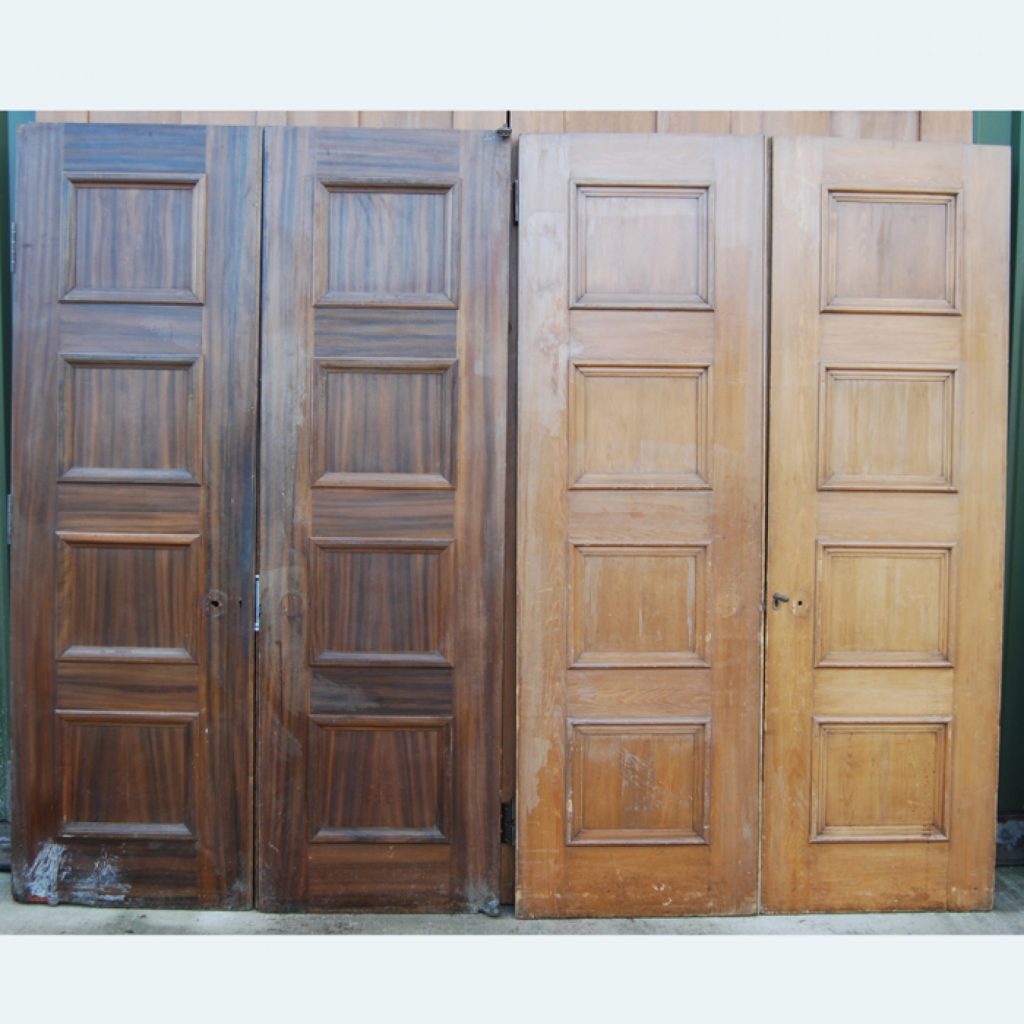
LASSCO has salvaged a number of items from the College pending the demolition of the Portugal Street wing. A number of very fine and sturdily made doors in English Oak and African Mahogany and Pine were stripped out and await sympathetic reuse.
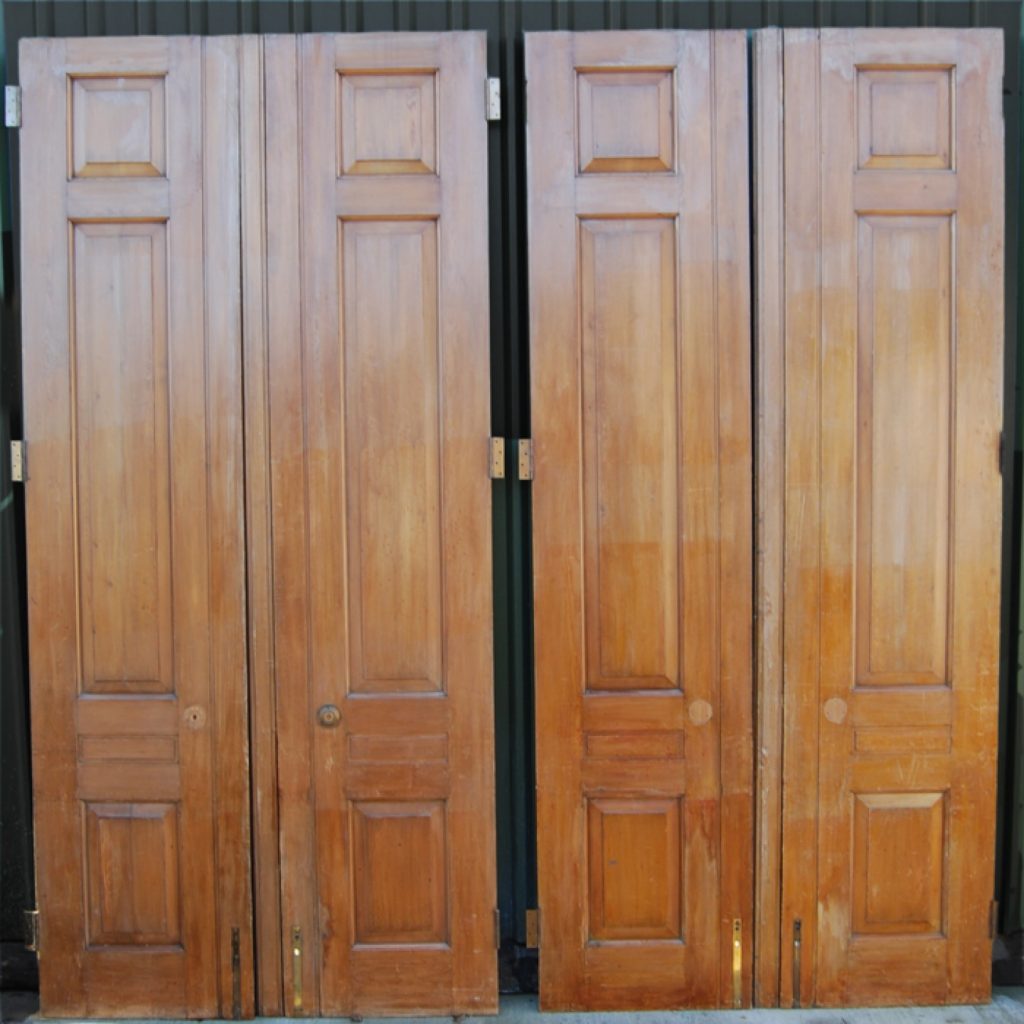
We have also managed to salvage a number of the impressive decorative Columns and Pilasters in Tuscan Order which flanked the entrances to the Fellows and Members rooms, in which were so many touching memorials to the benefactors of the post war rebuild.
Lastly the handsome solid English Oak floor was stripped in its entirety. English Oak in a floor of this period is really quite rare. Even most floors of the pre-war period (and in particular strip flooring) tend to be of American or Canadian origin. To see such commitment to the integrity of the materials involved gives an indication of the great pride and devotion that the post-war re-builders must have felt in their efforts and in their task of reinstatement.
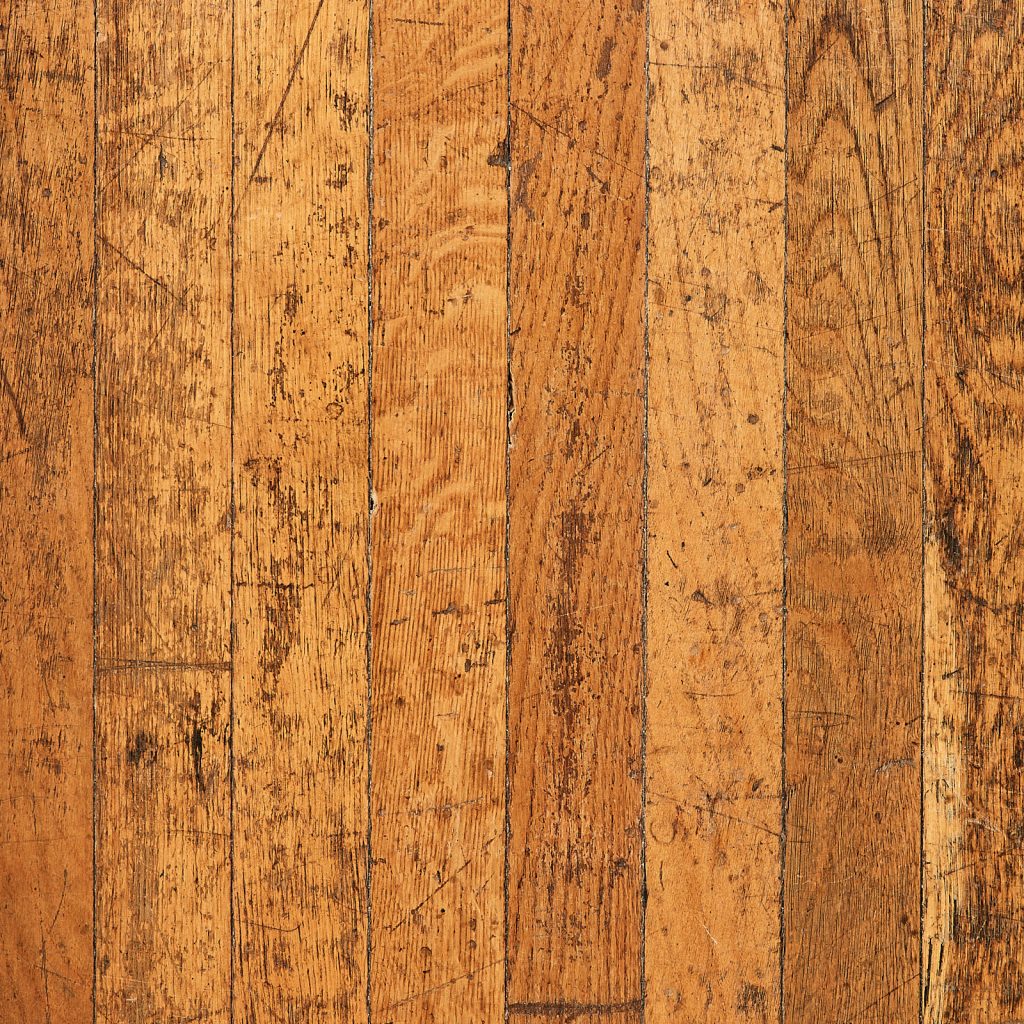
The poet Coleridge wrote of John Hunter, the man whose collection is to be rehoused away from the the Portugal Street development of the Royal College of Surgeons:
“WHEN we stand before the bust of John Hunter, or as we enter the magnificent museum furnished by his labours, and pass slowly, with meditative observation through this august temple, which the genius of one great man has raised and dedicated to the wisdom and uniform working of the Creator, we perceive at every step the guidance, we had almost said, the inspiration, of those profound ideas concerning Life, which dawn upon us, indeed, through his written works, but which he has here presented to us in a more perfect language than that of words – the language of God himself, as uttered by Nature. That the true idea of Life existed in the mind of John Hunter I do not entertain the least doubt..”
The new architects have much to live up to.
